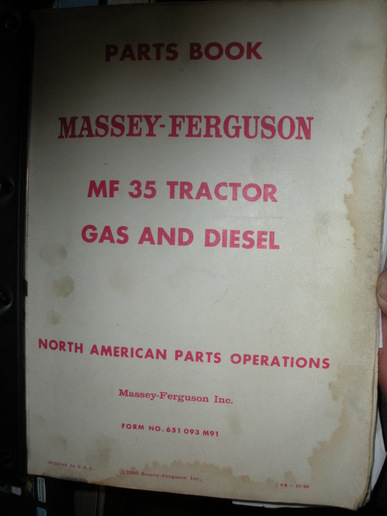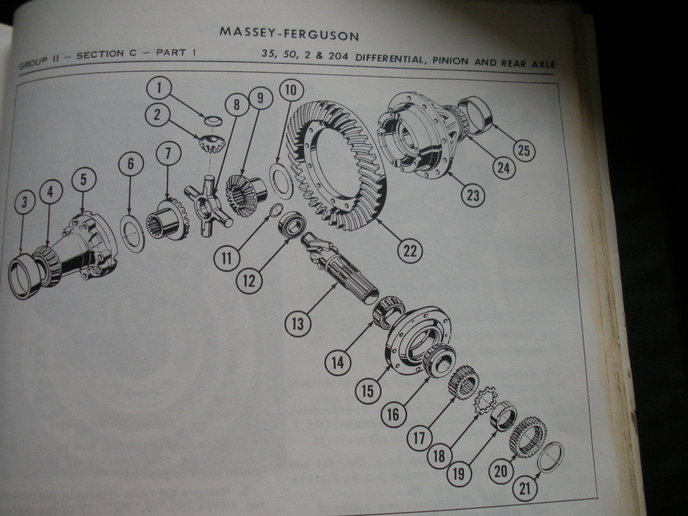My youngest boy and I dived into the NH68 this evening. The goal was to figure out why, though the timing marks on the knotter are OK, the plunger wants to hit the stop as the needles are making their way to the home position as the knotter cycle is completed AND to figure out why the needles are coming into the chamber when the plunger is some 3ish inches past them vs the 1/2-ish per the manual.
Having someone to rotate the flywheel so we could give it a look-see is very, very helpful!
The big thing that jumped out at us was the pick-up side of the knotter shaft - the lever that cycles the needle yoke/yoke rod was out of position at the end of the knot cycle. There was an offset towards the front of the baler vs the back - opposite of the manuals I have. When the knotter cycle starts, it pushed the yoke further towards home as the offset straightens and then pulls the yoke/needles forward to the knotters. The plunger is heading to the rear the whole time. This would probably explain the needles being late into the chamber and late coming out of it.
So to fix this, I think I need to set the home position with the yoke rod to the left of center per the manuals I have and then reset the timing marks on the knotter. However, if I do this adjustment, I think I will also need to adjust the knotter stop, so when the knotter cycle is complete, the needles are in the home position and the yoke rod is offset left center as mentions above.
I can see the knotter stop via and trip lever mechanism is mounted in slots such that the stop can be moved front/back. However the manuals speaks, in addition to the horizontal movement, also vertical movement.
Questions:
1. Anyone had their yoke rod out of position as I describe above and if so, how did you fix it?
2. Knotter stop - am I anywhere close on this? Have you made this adjustment and any advice to go with it, including vertical adjustment?
I think we're close and will try it again tomorrow with a full day of daylight vs a few hours tonight.
Somehow, I'm begging to think that when I get through learning/studying these knotters, I might be able to work as a New Holland mechanic on them - LOL! I just hope my boys are soaking this stuff up. One of these days, they might bethe ones on this forum answering everyone's questions like mine, except on their 75 or 100 year old New Holland 68 baler!
Thanks again for everyone's help!!!!!
Bill
Having someone to rotate the flywheel so we could give it a look-see is very, very helpful!
The big thing that jumped out at us was the pick-up side of the knotter shaft - the lever that cycles the needle yoke/yoke rod was out of position at the end of the knot cycle. There was an offset towards the front of the baler vs the back - opposite of the manuals I have. When the knotter cycle starts, it pushed the yoke further towards home as the offset straightens and then pulls the yoke/needles forward to the knotters. The plunger is heading to the rear the whole time. This would probably explain the needles being late into the chamber and late coming out of it.
So to fix this, I think I need to set the home position with the yoke rod to the left of center per the manuals I have and then reset the timing marks on the knotter. However, if I do this adjustment, I think I will also need to adjust the knotter stop, so when the knotter cycle is complete, the needles are in the home position and the yoke rod is offset left center as mentions above.
I can see the knotter stop via and trip lever mechanism is mounted in slots such that the stop can be moved front/back. However the manuals speaks, in addition to the horizontal movement, also vertical movement.
Questions:
1. Anyone had their yoke rod out of position as I describe above and if so, how did you fix it?
2. Knotter stop - am I anywhere close on this? Have you made this adjustment and any advice to go with it, including vertical adjustment?
I think we're close and will try it again tomorrow with a full day of daylight vs a few hours tonight.
Somehow, I'm begging to think that when I get through learning/studying these knotters, I might be able to work as a New Holland mechanic on them - LOL! I just hope my boys are soaking this stuff up. One of these days, they might bethe ones on this forum answering everyone's questions like mine, except on their 75 or 100 year old New Holland 68 baler!
Thanks again for everyone's help!!!!!
Bill



